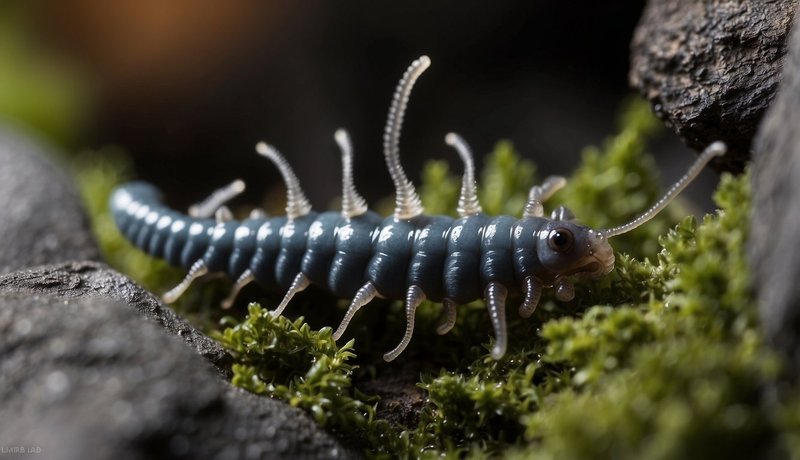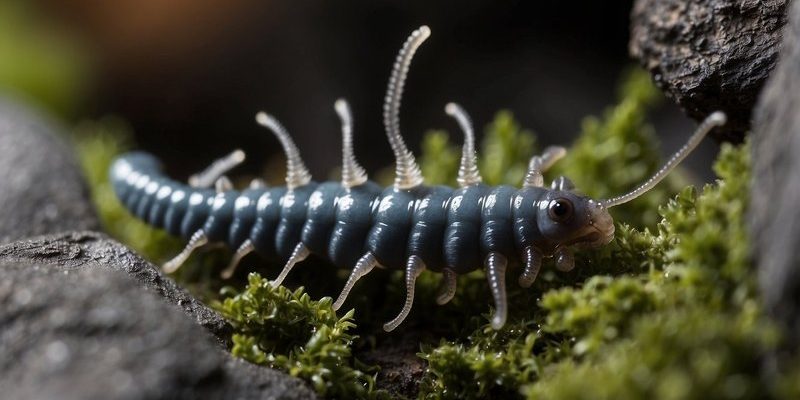
Velvet worms, known scientifically as *Onychophora*, are a unique group of invertebrates that have been around for about 500 million years. They look a bit like a cross between a caterpillar and a slug, with soft bodies and tiny legs. What makes them so interesting is how they hunt. Their sticky, slime-producing tactics offer insights into the predatory behaviors of ancient creatures. By studying these living fossils, scientists can uncover the strategies that helped shape the evolutionary path of predators today. So, let’s dive deeper into the world of velvet worms and explore how they help us understand ancient predation.
The Unusual World of Velvet Worms
When you first lay eyes on a velvet worm, it might not seem like much. But don’t let their unassuming appearance fool you. These creatures are packed with surprises. Velvet worms are known for their segmented bodies and small, stubby legs. They typically range from 5 to 15 centimeters long and are often found in humid environments, like rainforests.
What really sets them apart is their hunting method. Velvet worms can shoot out a sticky, mucous-like substance that can trap prey, like insects. This method isn’t just quirky; it’s a critical survival tactic. Imagine being able to catch your dinner from a distance, making it a lot easier to eat—this strategy mirrors some predatory tactics seen in ancient marine creatures.
This unique hunting style gives researchers clues about the predatory strategies used by ancient animals. The evolutionary journey of velvet worms is like a living time capsule, showing us how creatures adapted to their environments over millions of years.
Predation and Evolution
Now, let’s talk about predation. Predation is essentially how one organism hunts and eats another. In the case of velvet worms, they play an essential role in their ecosystems. They keep insect populations in check, demonstrating that even small creatures can have a significant impact on their environment.
Understanding velvet worms helps researchers unravel the complexities of evolutionary biology. The way these worms trap and consume their prey is similar to methods used by ancient predators. For instance, their slime method can be seen as a primitive form of the advanced techniques used by various carnivores today. By studying velvet worms, scientists can better understand how predation strategies evolved over time.
Here’s the thing: predators are not just about brute force; they adapt and evolve to become more efficient hunters. Velvet worms exemplify this by showcasing how a simple, effective hunting strategy can thrive for hundreds of millions of years. Their success might teach us a lot about resilience and adaptability in nature.
Comparing Velvet Worms to Other Predators
To fully appreciate the hunting strategies of velvet worms, it helps to compare them with other predators. Let’s take a look at how they stack up against more well-known creatures, like spiders and larger mammals.
- Spiders: These arachnids are known for their webs and venom. They are skilled hunters with a variety of methods to catch prey, often employing a direct attack. Velvet worms, on the other hand, use their slime to trap prey before making the kill.
- Larger Mammals: Think lions and wolves, who rely on speed and teamwork to hunt. Unlike these animals, velvet worms don’t have the luxury of speed or comradeship; their success relies on a single, effective technique—shooting slime.
- Ancient Predators: Many ancient predators relied on ambush tactics or sheer size. Understanding how the velvet worm’s techniques evolved helps us visualize a broader picture of predatory development through history.
By studying these comparisons, we can glean insights into how evolution shapes hunting strategies. The velvet worm offers a window into a time when creatures had to adapt in order to survive, reminding us that evolution is a constant dance of adaption and innovation.
How Scientists Study Velvet Worms
Studying velvet worms isn’t as simple as it sounds. Scientists often go into moist rainforests where these creatures thrive, carefully collecting samples. They observe how velvet worms interact with their environment and their prey. This research often involves a mix of laboratory work and field studies, which can be pretty fascinating.
Researchers employ various techniques, such as video analysis, to capture the moment a velvet worm shoots slime at its prey. Observing this in real-time allows scientists to understand the nuances of their predatory behavior, just like a wildlife documentary revealing the secrets of big cats on the hunt.
Analyses of velvet worms often include genetic studies to understand their evolutionary history. By comparing their DNA with other species, scientists can track how these remarkable creatures have changed over time, revealing their ancient lineage. This information is essential for piecing together the larger puzzle of life’s history on Earth.
The Impact of Velvet Worm Research
Studying velvet worms isn’t just about understanding an ancient form of predation; it has broader implications for ecology and conservation. As climate change affects ecosystems worldwide, every creature plays a role in maintaining a balance. By learning more about velvet worms, we can better appreciate their role in the food web.
Additionally, understanding their predatory strategies may help in pest control. If scientists can learn from the worms’ effective hunting methods, it could lead to new, eco-friendly ways to manage insect populations in agriculture, minimizing harmful pesticides.
Here’s something to think about: each tiny velvet worm contributes to a massive ecological narrative. Their survival techniques might inspire innovations in technology or agriculture, showing that nature has a lot to teach us if we just look closely enough.
The Future of Velvet Worm Research
Looking ahead, the research on velvet worms has exciting potential. As technology advances, scientists can use different tools, like 3D imaging and genetic sequencing, to study these creatures further. Each discovery adds a layer to our understanding of evolution and ancient predatory strategies.
Moreover, as ecosystems change, researchers might find new ways to adapt velvet worms to different environments. They could serve as indicators of ecological health, helping scientists monitor environmental changes over time.
The future holds promise for uncovering even more secrets from these fascinating animals. With ongoing research, we could gain deeper insights into not just velvet worms but also the history of life on Earth and how ancient predation strategies continue to influence modern ecosystems.
In conclusion, velvet worms might seem simple, but they pack a punch in terms of what they can teach us about ancient predation strategies. By studying them, we unlock secrets of the past and gain tools for addressing present-day environmental challenges. These little creatures remind us that even the smallest life forms can have significant impacts on our understanding of the natural world. So, next time you think about predators throughout history, remember the velvet worm and the valuable lessons it has to offer.

